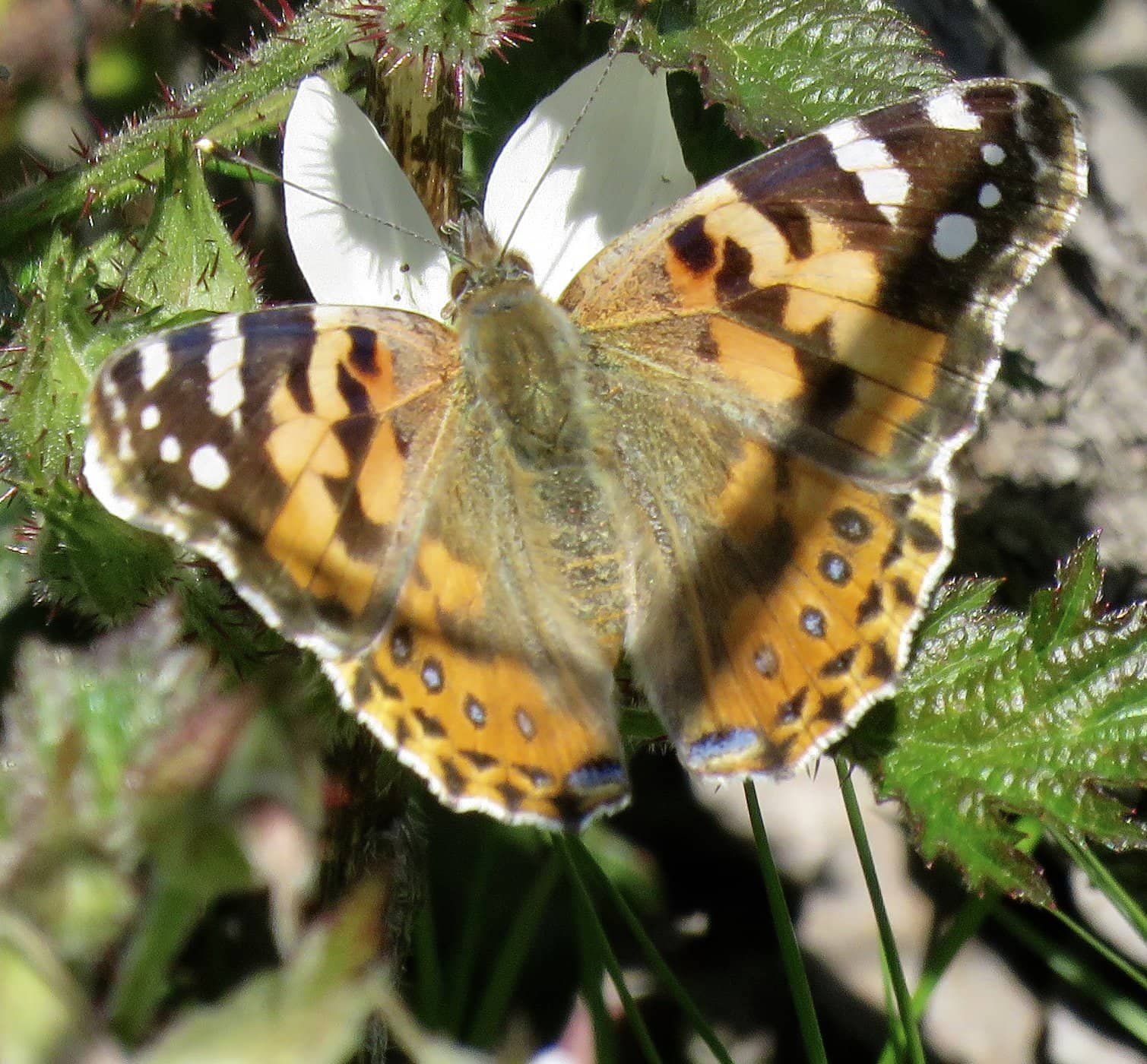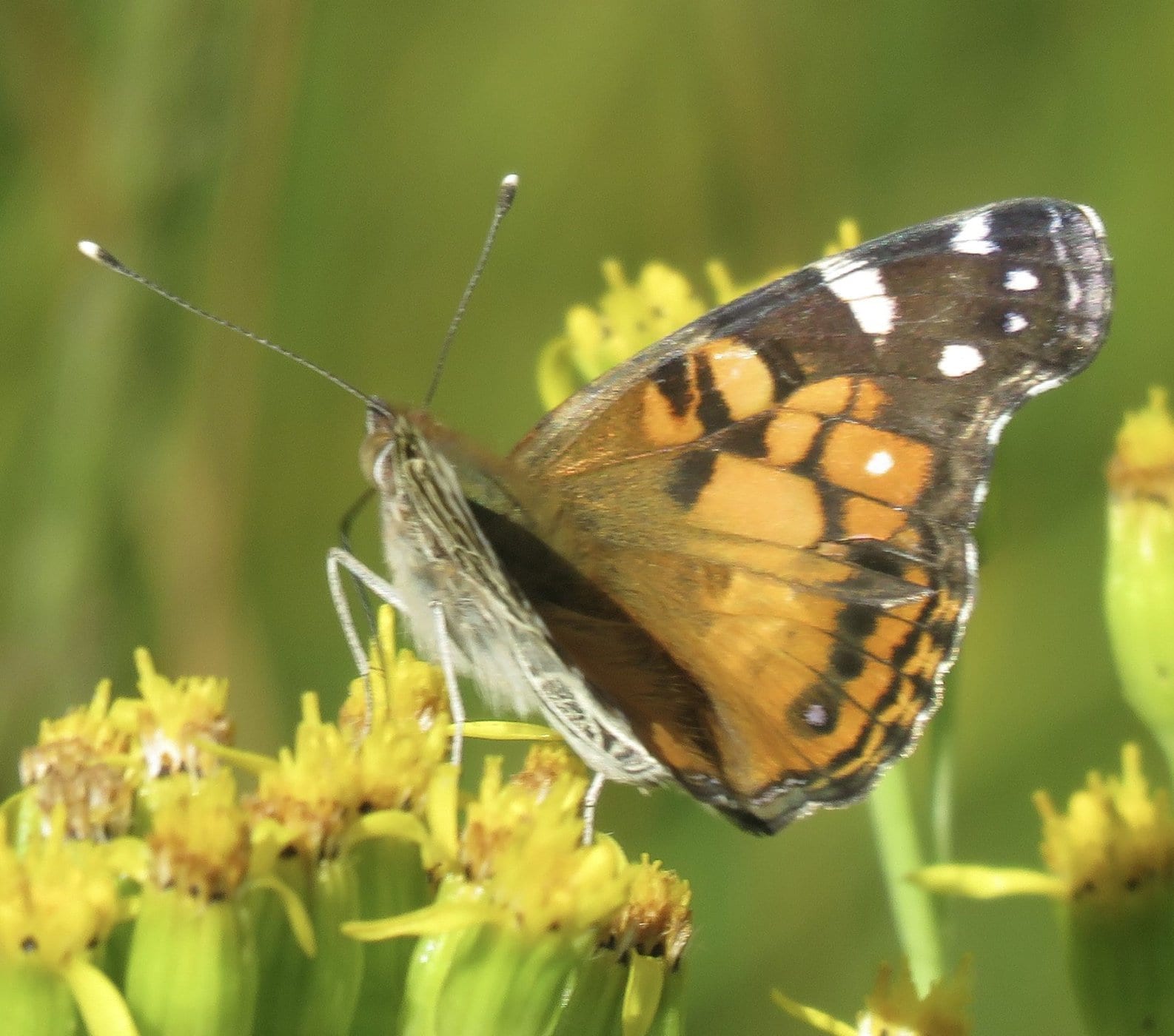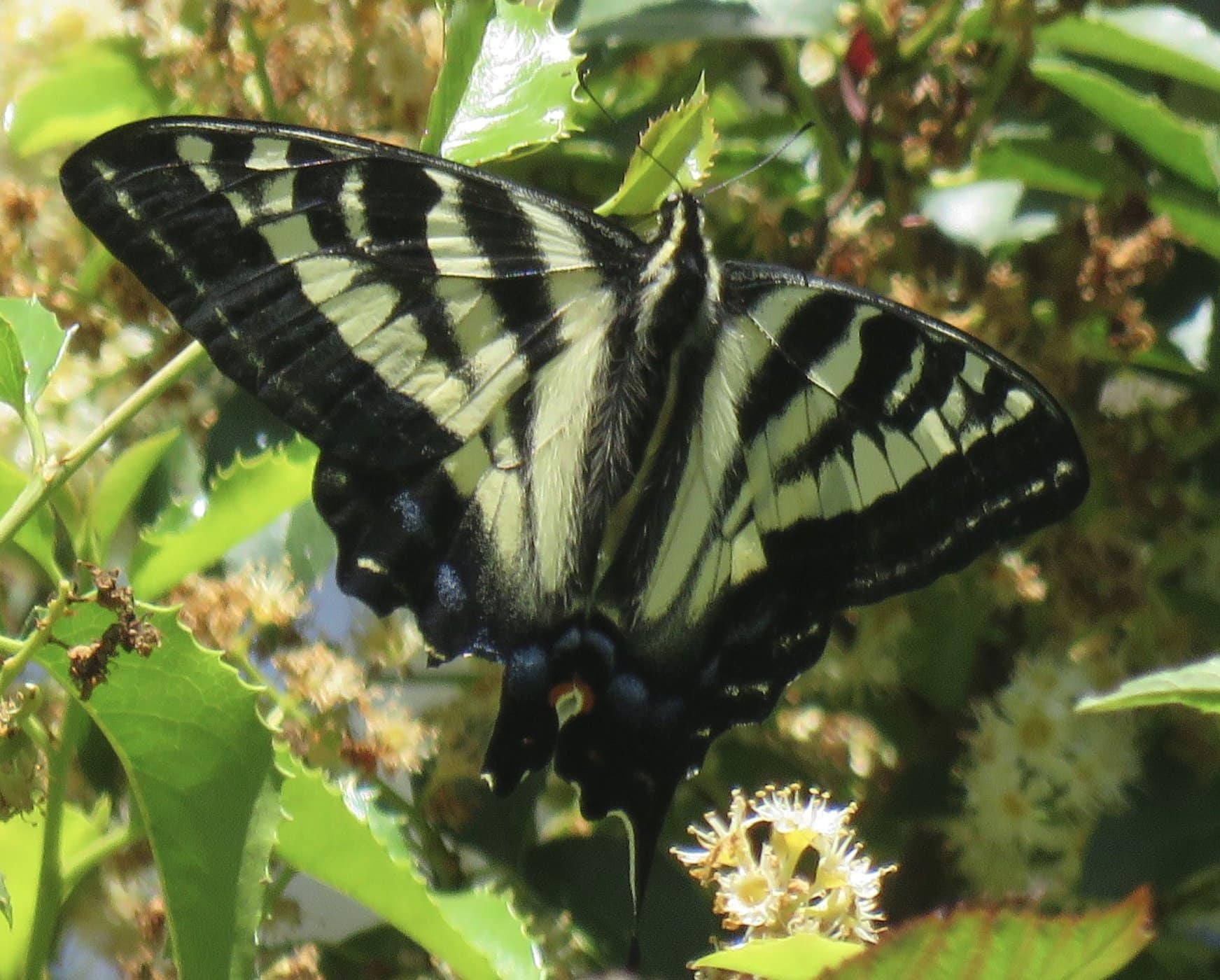Spring on the Summit
By Liam O’Brien
“Mysterious and little known organisms live within walking distance of where you sit. Splendor awaits in minute proportions.” – E.O. Wilson, Biophilia.
I’d like to start this off with a correction for my last blog entry. Celia Ronis correctly pointed out recently that my sentence structure made it sound like Linnaeus gave the Mourning Cloak butterfly it’s other well-known name, the “Camberwell Beauty” He did not. What I was trying to say was that it was Linnaeus who named the butterfly to science. Is it any wonder I received A for content and C for grammar on my papers in high school? Thanks Celia for pointing that out!
On the way up to Mount Sutro one day in early May, I observed a Black Phoebe – a bird I consider to be the super Pterodactyl of butterfly eaters.
Trying to bridge the worlds of birders and butterfly enthusiasts here, it might be an appropriate point now to point out the obvious to many: butterflies, though celebrated for their pollinating skills (which is somewhat overrated) ultimately, are bird food. Spiders, lizards, dragonflies, and many other small predators eat butterflies as well when the opportunity presents itself.
I was in the Presidio once photographing a California Tortoiseshell butterfly and I observed a Black Phoebe through the lens snatch it away for a midday snack. Butterflies have evolved many ways to dodge this fate: mimicry, false heads and colors that help them blend into the background. This day I crossed paths with one of the best examples of this, the Gray Hairstreak (Strymon melinus).

The Gray Hairstreak is a perfect example of a butterfly with a false head on its backend. There is a real eyeball on the real head and a large fake eyeball/dot on the edge of a large orange spot on the other side. A real set of antennae above its real eye and the threadlike hairs coming off the fake head that represent faux antennae. That’s where the name “Hairstreaks” come from. Many of our Lycaenidae (the family this butterfly belongs to) in San Francisco take it one step further with a motion called “scissoring”- a type of twitching and rubbing of the hind area to draw attention the predator’s attention away from the real head. One sees many butterflies with v-shaped notches out of the wings. These are what we call “bird strikes.” Butterflies are actually built to withstand many strikes before they succumb ultimately.
Spring seemed insanely short this season but all the Brush-foot butterflies that have a high emergence during May and June showed up on Mount Sutro: all the Vanessas were accounted for (this is the genus for our three Painted Lady species: Vanessa cardui – the Painted Lady, Vanessa virginiensis – the American Painted Lady & Vanessa annabella – the West Coast Painted Lady). The Red Admiral (Vanessa atalanta) is also within this genus but is not considered one of the ladies. Perhaps no other group is San Francisco frustrates the novice more than distinguishing these three from one another. It took me about six years in the field before it all clicked. I’ll include photos of each here but it would take too much time to talk through. Just study the shots on your own and you’ll get it.



I’d be remiss not to include the highlight of the project so far. I got out on social media but I would like to include it in this blog today: On May 24th, I met my friends JJ Johnson and her husband Tom at the summit for lunch (and quite frankly, two more sets of eyes to help me). We were eating near the meadow when a large swallowtail floated by. My primitive brain thought: “That’s too light to be a Western Tiger.” But nonetheless, I threw my sandwich down and bolted after it.
It settled towards the top of a large Toyon. Flashed off a number of camera shots. The Pale Tiger Swallowtail (Papilio eurymedon) is a butterfly know to fly on San Bruno Mountain south of our county line.

I’d never seen it in 25 years of combing SF and, quite frankly, I couldn’t believe it then. But there it was. It’s overall field (the general color of the majority of the butterfly) is white and it vertical black stripes are much bolder than the Western Tiger’s. Last sighting of this butterfly in San Francisco was over a hundred years ago by F.X. Williams.
So you see, folks, that guy who dismissed Mount Sutro as a waste of time for butterflies years back? Me? He was served up a nice dish of crow this day…to tie it back to birds. Ha -Ha!
Next installment: We’ll get into the history of Monarchs up there – a species that is usually the gateway drug into butterflies for most.
Got questions for Liam? Feel free to email your inquiries to liammail56@yahoo.com.
About Liam: Liam O’Brien is a known lepidopterist in San Francisco and beyond. As a conservationist, he created such projects as The Green Hairstreak Corridor and Tigers on Market Street for Nature in the City and Operation Checkerspot for the Presidio Trust. He received the 2014 Environmental Educator Award from Bay Nature Magazine. His blog, The Flying Pansy, can be found on BAYNATURE.ORG by clicking HERE. Look for his first book by Heyday Press in 2023. You can also follow Liam on at his Instagram handle: @ROBBER_FLY
